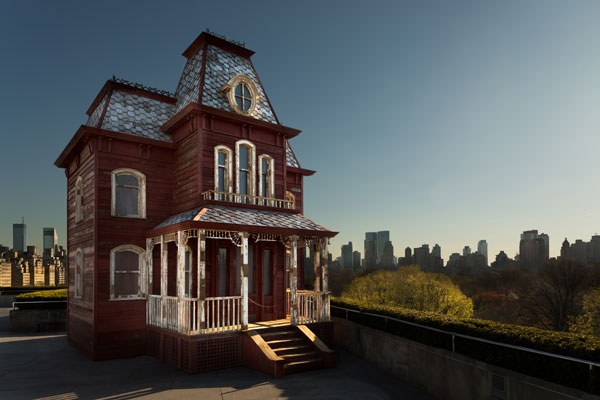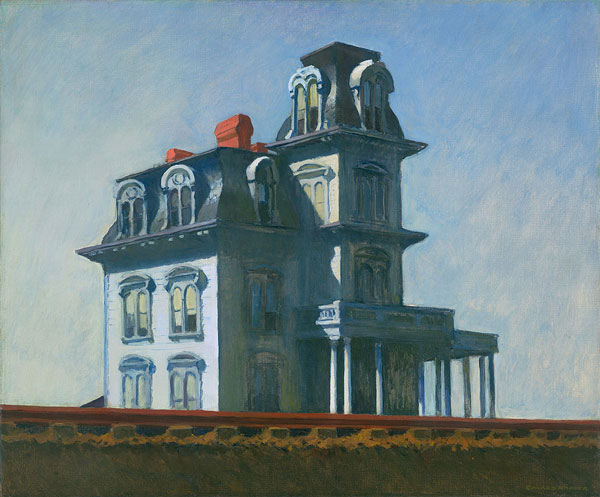Could that structure perched uneasily on the roof of the Metropolitan Museum of Art be from the set of a horror movie, or is it a metaphor for the psychodrama of American art? The horror! The horror!
If it looks familiar, that’s because its outlines entered the popular imagination more than 50 years ago, with Alfred Hitchcock’s Psycho. Its timbers have been around for years as well, as an icon of rural America: the classic red barn. To believe its creator, Cornelia Parker, it has deeper claims still, going back to the first years of life. Only now it is part of the New York skyline, too, as summer sculpture at the Met, through October 31.

Had you forgotten that Alfred Hitchcock based the Bates Motel on the work of Edward Hopper? “Transitional Object (PsychoBarn)” is all about remembrance and reconstruction. Parker first thought of recreating an actual barn, but the roof only had limited space. The connection between the movie and the painting proved decisive, not least because Hopper painted his share of red barns, too, under evocative skies.
Does Hopper’s House by the Railroad (1925) seem fearsome only in retrospect, after Parker’s blood-red and Hitchcock’s black-and-white Psycho, which plays on fantasies of a mother’s love, with the son there to mop up the blood.

Edward Hopper, The House by the Railroad, 1925
Parker’s title also alludes to a child’s incomplete separation from a mother’s nurturing. Psychological theorist D.W. Winnicott coined the term transitional object for such things as teddy bears, although visitors to the Met’s rooftop bar might be more in the mood for a drink. Winnicott, the author of Playing and Reality, was among the most ardent of post-Freudians, and like Parker, he was British. Parker, though, has had a greater love-hate relationship with America. Her previous work, including the charred remains of a model African-American church, has existed on solid ground.
Her latest foray into the American mind began in Upper New York State, where a barn offered her its timber and tin roof. Firms specialize in such demolitions, it turns out, but Showman Fabricators in Long Island City also has experience creating stage sets. Clearly, Parker aims for both architectural and theatrical effects. Like most stage sets, including that in the movie, this building offers only a façade, its two sides hiding steel scaffolding and black water tanks for ballast, to keep it from blowing away at any minute. From the front, however, it looks as if it might have been there for long enough for the paint and lime to have peeled off.
Parker offers an excellent opportunity to contemplate art’s place between mass entertainment and the subconscious over a drink. Besides, she gives the Met a whole new wing without once extending its footprint onto Central Park, with (I promise) the scariest period rooms that no one will ever, ever see.
Above Met images: Installation view of The Roof Garden Commission: Cornelia Parker, Transitional Object (PsychoBarn) at The Metropolitan Museum of Art, 2016, photography by Hyla Skopitz, The Photograph Studio, The Metropolitan Museum of Art, ©2016.
Cornelia Parker, “Transitional Object (PsychoBarn)” at The Met Fifth Avenue, New York, through Oct. 31, 2016.

